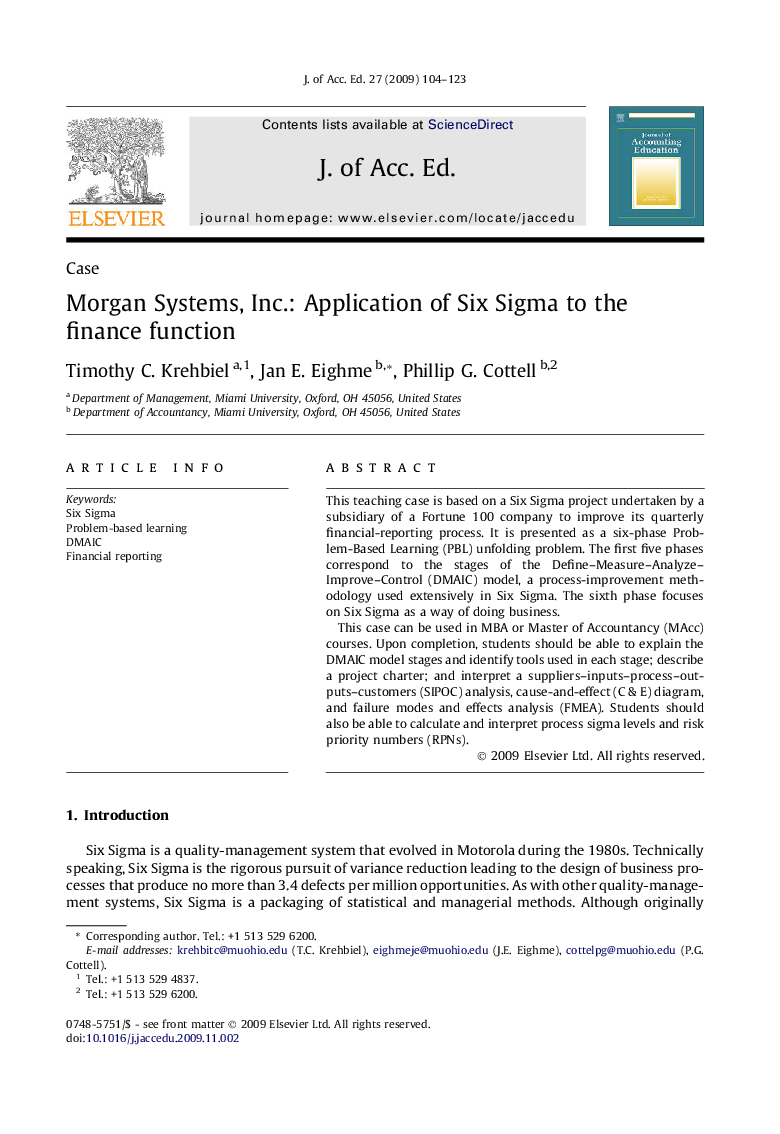| Article ID | Journal | Published Year | Pages | File Type |
|---|---|---|---|---|
| 359546 | Journal of Accounting Education | 2009 | 20 Pages |
This teaching case is based on a Six Sigma project undertaken by a subsidiary of a Fortune 100 company to improve its quarterly financial-reporting process. It is presented as a six-phase Problem-Based Learning (PBL) unfolding problem. The first five phases correspond to the stages of the Define–Measure–Analyze–Improve–Control (DMAIC) model, a process-improvement methodology used extensively in Six Sigma. The sixth phase focuses on Six Sigma as a way of doing business.This case can be used in MBA or Master of Accountancy (MAcc) courses. Upon completion, students should be able to explain the DMAIC model stages and identify tools used in each stage; describe a project charter; and interpret a suppliers–inputs–process–outputs–customers (SIPOC) analysis, cause-and-effect (C & E) diagram, and failure modes and effects analysis (FMEA). Students should also be able to calculate and interpret process sigma levels and risk priority numbers (RPNs).
